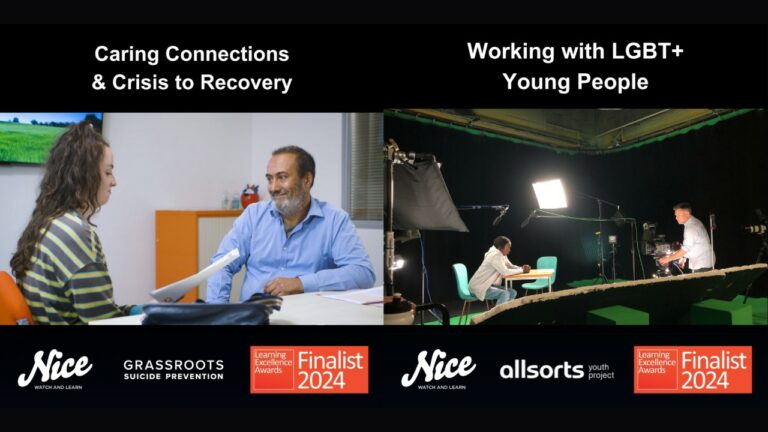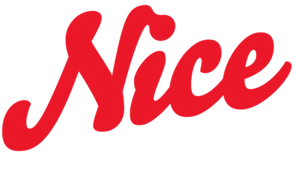Total Recall is the result of a collaboration between Nice Media and Wildfire. It was inspired by a mutual appreciation of the benefits of video in learning, but also a desire to supercharge those benefits with something else. That ‘something else’ is the AI tool, Wildfire, designed and developed by learning expert Professor Donald Clark.
This article draws on the ideas and learning theory presented by Donald in his recent post ‘How to turn video into deep learning’.
“The mistake is to see video as a learning medium in itself…video looks and feels great but the reality is that it burns up as it enters the atmosphere and rarely ever lands.”
Donald Clark
As a video production company who have specialised in learning since 2003, Nice has to regularly consider the ability of video to offer an effective learning experience. The strengths of video can’t simply be presumed. “The mistake is to see video as a learning medium in itself.”
How memory works
Working memory and long-term memory
In order to understand where video is best applied, it’s important to understand the basics around how memory works. We learn by moving our experiences from working memory into long-term memory.
Our working memory has limited capacity and limited duration, however, our long-term memory doesn’t have the same limitations. In fact, there are no known limitations to long-term memory. If you have committed something to your long-term memory, you can quickly transfer thoughts from there to your working memory without much effort. This demonstrates the value of ‘knowing’ something. The more we know, the easier it is to learn, because we use existing knowledge to understand and integrate new information.
Episodic and semantic memory
The other memory distinction to make is that between episodic memory and semantic memory. Episodic memory is our memory of experiences and our emotions. Semantic memory is the recall of facts. These types of memory are processed in different ways by the brain.
Video isn’t great for semantic memory, but it is much better placed when it comes to episodic memory. Think of the recent Netflix series ‘Our Planet’ with David Attenborough. The likelihood of us being able to remember that facts and figures associated with the decline of the planet is minimal, but it’s hard to forget seeing entire icebergs disintegrate before our eyes.
The good news about video
“The good news is that video has had a century or so to develop a rich grammar.”
Donald Clark
There are many things that video can achieve that can’t be achieved by any other medium.
- Video can capture real experiences that might be difficult or impossible for some people to ever experience for themselves (a journey in outer space or on the ocean floor to give some more extreme examples!)
- Video can clearly capture and replay authentic human interactions.
- Video can show places in crystal clear detail.
- Video can walk an audience through a detailed process or procedure that might be difficult to access or explain otherwise.
- In terms of using dramatic film-making techniques, video can communicate rich layers of text and subtext through a range of filmic language and devices which have been developed over many years.
Video, used artfully, has the power to emotionally engage an audience and leave an imprint in their episodic memory.
The illusion of learning
Bjork and others uncovered the phenomenon that learners can think that learning experiences have stuck when in fact they have disappeared from their memory, often as soon as within the first 20 minutes. This is the danger with video – it can create the illusion of learning. This isn’t surprising when we think of how engaging video content can be – it’s easy to imagine enjoying a piece of content and then when actually tested on detail, it being very difficult to recall the facts.
The mistake we make with video in learning is not taking learning theory into account. Either because we forget about the limitations of working memory, or because we don’t understand those limitations.
There is a tendency to use video to communicate information that would be much better suited to other approaches. For example, detailed semantic information such as facts and figures would be better placed in a static document or an infographic which can complement video. Videos are also often too long and too quick for working memory to process.
Video is stronger “if the learner has the opportunity to supplement the video experience with some effortful learning.”
Donald Clark
Effortful learning
Video alone might not be enough, but if we apply what we know about learning, we can supercharge the effectiveness of video in the learning experience. Video needs to be accompanied by some sort of effortful learning in order to move the learning from the video from working memory to long-term memory. There a few ways to do this:
1. Video plus…video!
Repeated access to the video is important so that it’s possible for the learner to revisit the content as many times as they want, at their own pace. The psychology of learning explains that repeated access is important in helping us embed learning for better retention and recall.
However, does repeatedly watching a video sound like a good strategy for trying to learn something new? It’s not actually practical, efficient or enjoyable.
2. Video plus… taking notes
Taking notes increases retention by up to 20-30%. Deeper processing happens when we write notes in our own words and draw diagrams. This makes intuitive sense to anyone who has ever revised for exams.
3. Video plus WildFire = Total Recall
Watch a video, then revisit it in chunks and reinforce your recall by interacting with an AI.
This third approach is the formula behind our new service, Total Recall. We have combined our video-centred learning expertise with Wildfire.
This third approach is the formula behind our new service, Total Recall. We have combined our video-centred learning expertise with Wildfire.
Total Recall: Effortful learning
The mechanics are simple. The AI behind Wildfire pulls the transcript from a video and creates an interactive learning experience that involves, at the most basic level, the learner inputting answers based on what they think they know. This is effortful learning because it involves retrieval and recall based on the video you have just watched. It’s an opportunity to embed the information you have just processed from the video.
“Research has shown that recalling back into memory – literally looking away and thinking about what you know, is even more powerful than the original teaching experience or exposure.”
Donald Clark
Want to know more?
Over the coming weeks we’ll be releasing more content about the specifics behind Total Recall and answering questions including how does the AI work? And what is the production process for a Total Recall course?
If you’d like to talk to a member of our team directly about Total Recall, please do get in touch.
Useful references
In the meantime, here are some useful references about the learning theory behind Wildfire and Total Recall.
Donald Clark | PlanB Learning website
Donald Clark | Wildfire website
Make it Stick, by Brown, Roediger III and McDaniel







